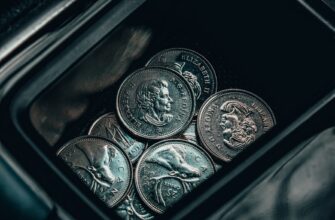Understanding Bitcoin Basics
Bitcoin, the world’s first decentralized cryptocurrency, offers financial freedom but requires careful handling. Unlike traditional money, Bitcoin exists digitally and isn’t backed by governments. Your ownership depends entirely on securing cryptographic keys—lose them, and your Bitcoin is gone forever. This guide demystifies how to safely buy and store Bitcoin, protecting your investment from hackers and human error.
How to Buy Bitcoin Safely
Purchasing Bitcoin involves selecting a trustworthy platform and verifying your identity. Follow these steps:
- Choose a Reputable Exchange: Opt for regulated platforms like Coinbase, Kraken, or Binance. Check reviews, security features (like 2FA), and insurance policies.
- Complete KYC Verification: Submit ID documents to comply with anti-fraud laws. Avoid exchanges skipping this step—they’re often scams.
- Enable Security Features: Activate two-factor authentication (2FA) using an authenticator app (not SMS). Set withdrawal whitelists and email confirmations.
- Fund Your Account: Link a bank account or debit card. Never use public Wi-Fi during transactions.
- Execute Your Purchase: Buy Bitcoin via market orders (instant) or limit orders (price-specific). Start small to test the process.
Pro Tip: Dollar-cost averaging—buying fixed amounts weekly/monthly—reduces volatility risks.
Best Practices for Storing Bitcoin
Never leave Bitcoin on exchanges long-term. Transfer it to a secure wallet immediately after purchase. Wallet options include:
- Hardware Wallets (Cold Storage): Devices like Ledger or Trezor store keys offline. Most secure for large holdings ($100+).
- Software Wallets: Apps like Exodus or Electrum. Use only on malware-free devices and enable encryption.
- Paper Wallets: Physical printouts of keys. Laminate and store in a safe—vulnerable to physical damage/theft.
- Custodial Wallets: Managed by third parties (e.g., exchanges). Avoid except for tiny, active balances.
Security Essentials:
- Backup wallet seed phrases on steel plates, stored in multiple locations.
- Never share private keys or seed words digitally.
- Update software regularly to patch vulnerabilities.
Common Mistakes to Avoid
- Ignoring Wallet Backups: 20% of Bitcoin is lost due to forgotten keys. Test backups.
- Using Unverified Apps/Exchanges: Research platforms—check Reddit communities and sites like CoinGecko.
- Falling for Phishing Scams: Double-check URLs and email senders. Scammers mimic legitimate services.
- Storing on Exchanges: Mt. Gox and FTX collapses prove exchanges aren’t vaults.
- Publicizing Holdings: Avoid social media bragging—it makes you a target.
Bitcoin Safety FAQ
Q: Can Bitcoin be hacked?
A: Bitcoin’s blockchain is highly secure, but exchanges/wallets can be compromised. Use cold storage for immunity.
Q: How much does a hardware wallet cost?
A: $50-$150. Worth the investment for holdings exceeding the device cost.
Q: Is Bitcoin anonymous?
A: No—transactions are public. Use wallets without KYC for privacy, but never for illegal activities.
Q: What if I lose my hardware wallet?
A: Your seed phrase restores access. The device itself is replaceable.
Q: Are software wallets safe for mobile?
A: Only if your phone is clean and encrypted. Avoid jailbroken devices.
Mastering Bitcoin security is non-negotiable. By choosing regulated exchanges, moving funds to cold storage, and guarding your keys like priceless artifacts, you turn digital gold into a fortress. Start small, stay vigilant, and reclaim financial sovereignty—safely.








